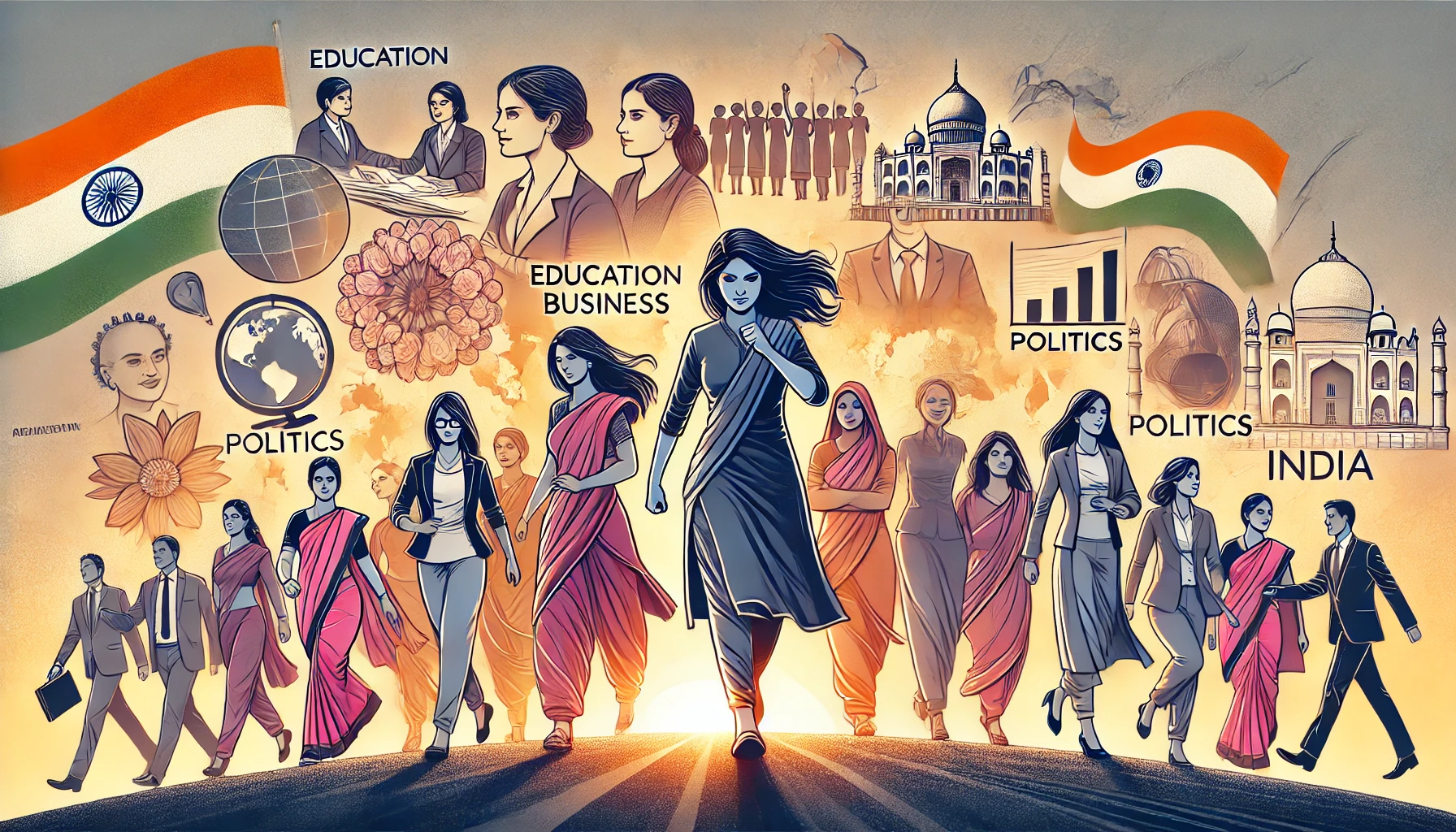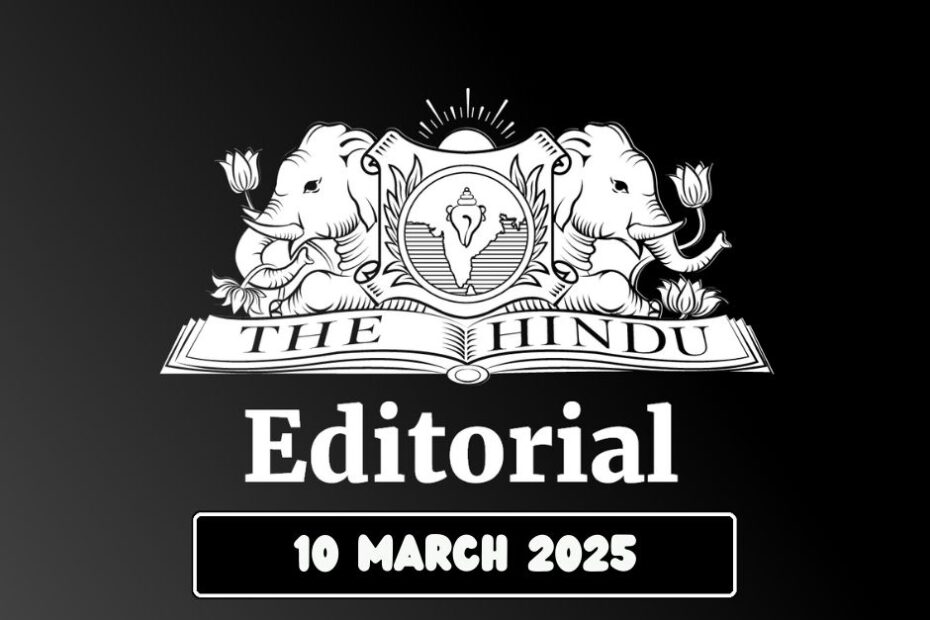| Topic: GS2 – Social Justice – Vulnerable Sections |
| Context |
|

Sanitation and Clean Water Initiatives
- The Swachh Bharat Mission (SBM) has transformed sanitation by constructing toilets, especially in rural areas, improving women’s dignity, safety, and well-being.
- Over 116 million households have benefited, reducing open defecation and ensuring a cleaner, healthier environment.
- A self-help group in Rourkela built community toilets for marginalized leprosy patients, enhancing menstrual hygiene and generating income through composting.
- The Jal Jeevan Mission (JJM) was launched to provide tap water connections to every household.
- Before JJM, only 17% of rural households had tap water, forcing women to spend hours fetching water.
- Now, over 150 million households have tap water, reducing this burden and increasing women’s participation in agriculture and allied sectors by 7.4%.
- Rural women’s workforce participation rose from 24.6% in 2017 to 41.5% in 2023, with JJM playing a crucial role.
Women-Led Businesses and Financial Inclusion
- Women entrepreneurs are becoming key drivers of India’s economy, supported by government initiatives.
- Over 73,000 startups with at least one female director have been recognized under Startup India.
- Financial support programs like Stand-Up India and Mudra Yojana have provided:
- ₹53,609 crore in loans to 236,000 entrepreneurs under Stand-Up India.
- ₹32.36 lakh crore in loans under Mudra Yojana, with 68% of loans going to women.
- Digital expansion through BharatNet and PM-WANI has brought high-speed internet to 199,000 villages and 2,14,000 gram panchayats, supporting women’s access to banking and e-commerce.
- Pradhan Mantri Jan Dhan Yojana has enabled over 300 million women to open bank accounts, fostering financial independence.
- Women entrepreneurs are growing in government procurement, with 8% of sellers on the Government e-Marketplace (GeM) and ₹46,615 crore in contracts secured by over 100,000 Udyam-verified micro and small enterprises (MSEs).
- Digital platforms are helping small-scale women entrepreneurs expand their businesses beyond local markets.
Women in Governance
- 33% reservation for women in legislative bodies is transforming political representation.
- Women now make up 46% of elected representatives in panchayati raj institutions (PRIs), with 1.4 million women serving in rural governance.
- Women leaders are driving policies that improve healthcare, education, and public safety, making governance more inclusive.
Women in Various Sectors
- Women now make up 43% of STEM graduates, strengthening India’s technical workforce.
- Government policies are fostering progress in entrepreneurship, education, and financial inclusion, creating opportunities for sustainable development.
- Ensuring continued support for these initiatives will lead to lasting economic and social transformation.
Conclusion
- India’s commitment to women’s empowerment is reshaping economic and social landscapes.
- By sustaining these initiatives, women will continue to play a transformative role in governance, business, and community leadership, ensuring long-term national progress.
| Practice Question: Discuss the impact of government initiatives on women’s empowerment in India, focusing on sanitation, financial inclusion, and entrepreneurship. How can these efforts be further strengthened? (250 Words /15 marks) |
2. Closing the gender gap in the higher judiciary
| Topic: GS2 – Indian Polity – Judiciary |
| Context |
|

Progress Over the Last Century
- Women in law have made significant advancements in India over the past 100 years.
- The first woman lawyer was entitled to practice in 1924.
- Since then, the number of women lawyers has increased, with several being designated as Senior Advocates.
- Women judges are present in the lower judiciary, marking progress in legal representation.
Inequality in Higher Judiciary
- Despite progress, women still face a glass ceiling in the higher judiciary.
- Women make up only 14.27% of judges in High Courts (109 out of 764).
- Some High Courts have only one woman judge, while three High Courts have none.
- The largest High Court has only three women judges, which is just 2% of the total strength.
- Women are also appointed later than men, reducing their chances of reaching senior positions.
- Only one High Court currently has a woman Chief Justice.
Representation in the Supreme Court
- Women’s representation in the Supreme Court is even lower.
- Only two women judges serve at present, and one will retire in June 2025, leaving just one.
- Since 2021, 28 judges have been appointed to the Supreme Court, but none were women.
- In the past 75 years, only one woman has been elevated directly from the Bar, compared to nine men.
Barriers to Women’s Appointments
- Various justifications are given for the low number of women judges, such as:
- Lack of eligible women candidates.
- Fewer senior women lawyers.
- Assumption that women do not want to become judges.
- However, the root cause is systemic gender inequality in the legal profession.
- Women judges face higher scrutiny and must prove their merit more than men.
Issues with the Appointment Process
- The collegium system, which is responsible for appointing judges, is opaque and non-transparent.
- There are no clearly stated criteria for eligibility or merit.
- Collegiums are mostly composed of men, leading to bias in selections.
- Even when women’s names are recommended, they are often not confirmed by the government.
- Since 2020, nine women’s names were recommended for High Court appointments, but five were rejected.
Need for Gender Equality in Judiciary
- Increasing women’s representation will make courts more inclusive and representative.
- More women on the Bench will enhance the legitimacy of the judiciary and ensure fair judgments.
Steps to Improve Gender Diversity
- Transparent Appointment Process
- The collegium must establish clear criteria for judicial appointments.
- Lawyers should have the option to express interest in being considered.
- The selection process should follow fixed timelines and high standards of integrity.
- Focus on Gender Diversity
- Ensuring at least one-third of judges in High Courts and the Supreme Court are women.
- Gender diversity should be considered alongside state, caste, and religion-based representation.
- Merit-Based Selections
- Appointments should be solely based on merit while ensuring diversity.
- A gender-balanced judiciary will enhance public trust in the institution.
Conclusion
- Women’s appointments should become commonplace, rather than seen as extraordinary events.
- Achieving gender balance in courts will ensure a judiciary that upholds constitutional values and represents all citizens equally.
| PYQ: Discuss the desirability of greater representation to women in the higher judiciary to ensure diversity, equity and inclusiveness.(150 words/10m) (UPSC CSE (M) GS-2 2021) |
| Practice Question: Examine the factors responsible for the underrepresentation of women in India’s higher judiciary. Suggest measures to ensure gender diversity in judicial appointments. (150 Words /10 marks) |
If you like this editorial don’t forget to check this – Beyond Beijing Unlocking India Bold Feminist Future
